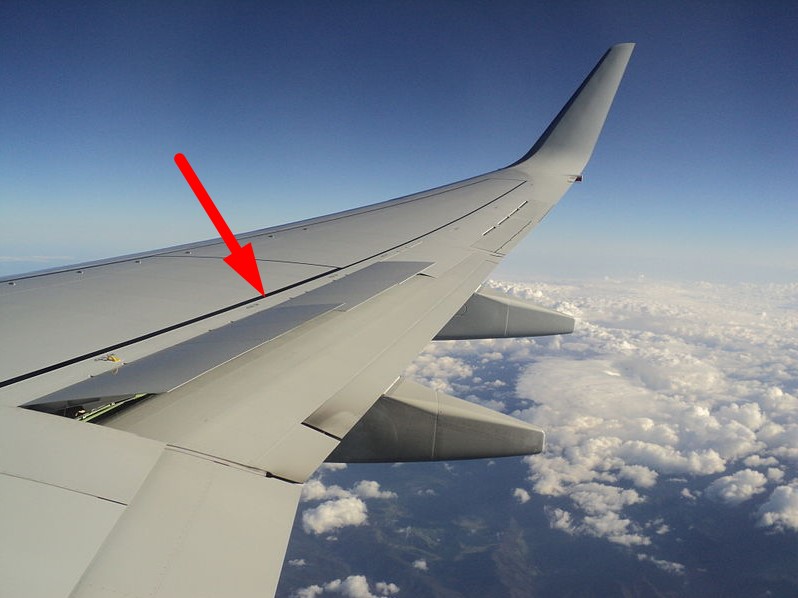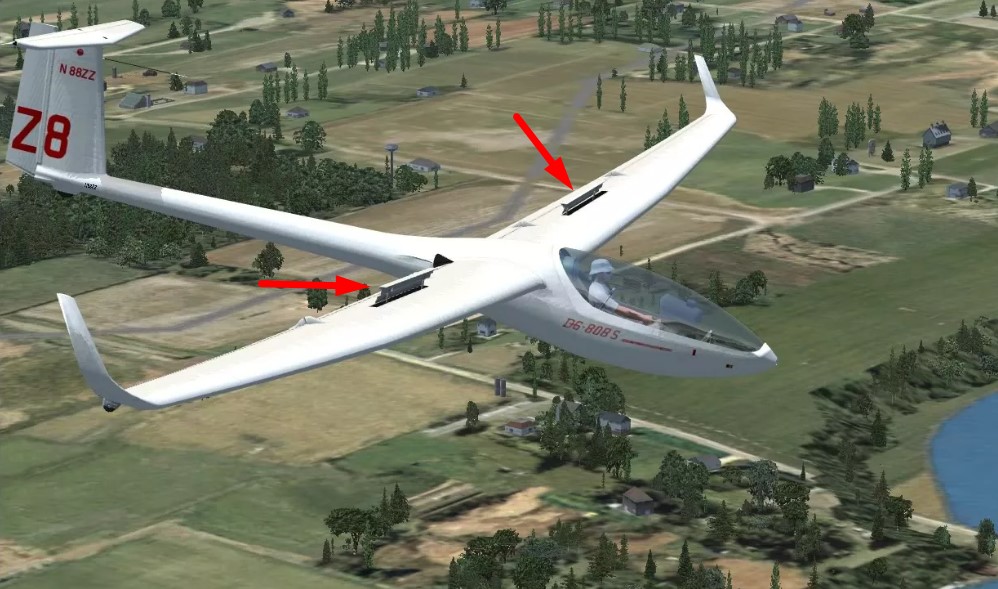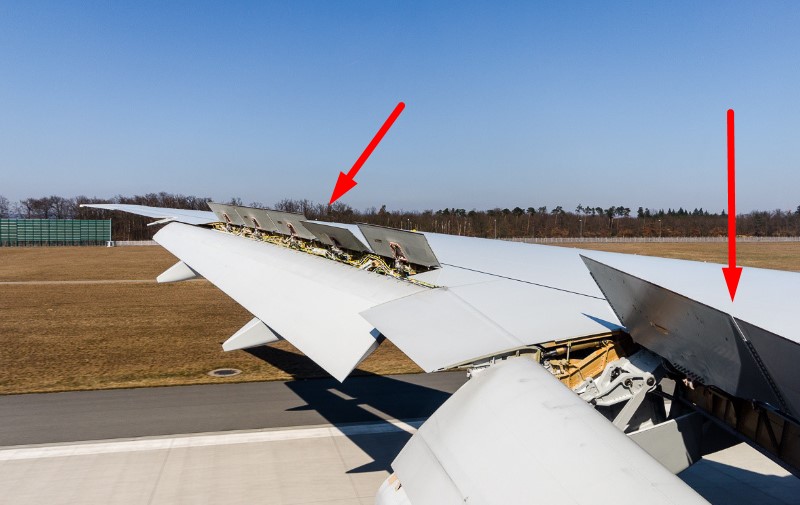¶ Introduction
Spoilers are devices intended to intentionally reduce the lift component of an airfoil in a controlled way. Most often, spoilers are plates on the top surface of a wing that can be extended upward into the airflow.
Sometimes they also called lift spoiler or lift dumper.
¶ Using spoilers
At the first look spoilers can just reduce the lift by increasing drag and we actually could call it high drag devices. But it's used widely in different cases.
¶ Reducing speed and altitude
Deploying spoilers on both wings at the same time allows the aircraft to descend without gaining speed, because they spoil the smooth airflow, reducing lift and increasing drag.
It is not obvious, but if you are flying through icing conditions, you often cannot reduce your engines to flight idle, because you need to keep your anti-icing surfaces, which are heated by engine bleed air, hot. Deployed spoilers help you to control your airspeed while losing altitude.
Typical view of deployed spoilers in flight:

On gliders, spoilers are most often used to control the rate of descent for accurate landings. By extending spoilers, glider pilots can increase drag, lower the nose, and descend faster without significantly increasing airspeed. Gliders typically utilize vertical types of spoiler (like some other small aircraft, for example the Mooney M20), which, when raised, disrupt the airflow over the aft part of the wing.

¶ Roll control
Spoilers are often used for roll control. Sometimes they are called spoilerons. They are deployed asymmetrically to augment the ailerons on each wing to bank the aircraft. The other advantage is the reduction of adverse yaw in a bank. To turn right, for example, the spoiler on the right wing is raised, destroying some of the lift and creating more drag on the right. The right wing drops, and the aircraft banks and yaws to the right. This helps keep your nose in line with the turn, which means you do not need to apply much rudder to stay coordinated.
¶ Reducing ground roll
Spoilers are also deployed to help reduce ground roll after landing. When you land, your wings are still generating lift, which means there is not much weight on your landing gear, and your braking effectiveness is reduced. When airliners touch down, they detect when the wheels hit the pavement and they deploy ground spoilers. By destroying lift, they transfer weight to the wheels, improving braking effectiveness.

- Pilot's Handbook of Aeronautical Knowledge by FAA - Chapter 6 Flight controls
- Wikipedia
- boldmethod.com
- airlineratings.com
- VID 531824 - Creation
- VID 496402 - Wiki.js integration